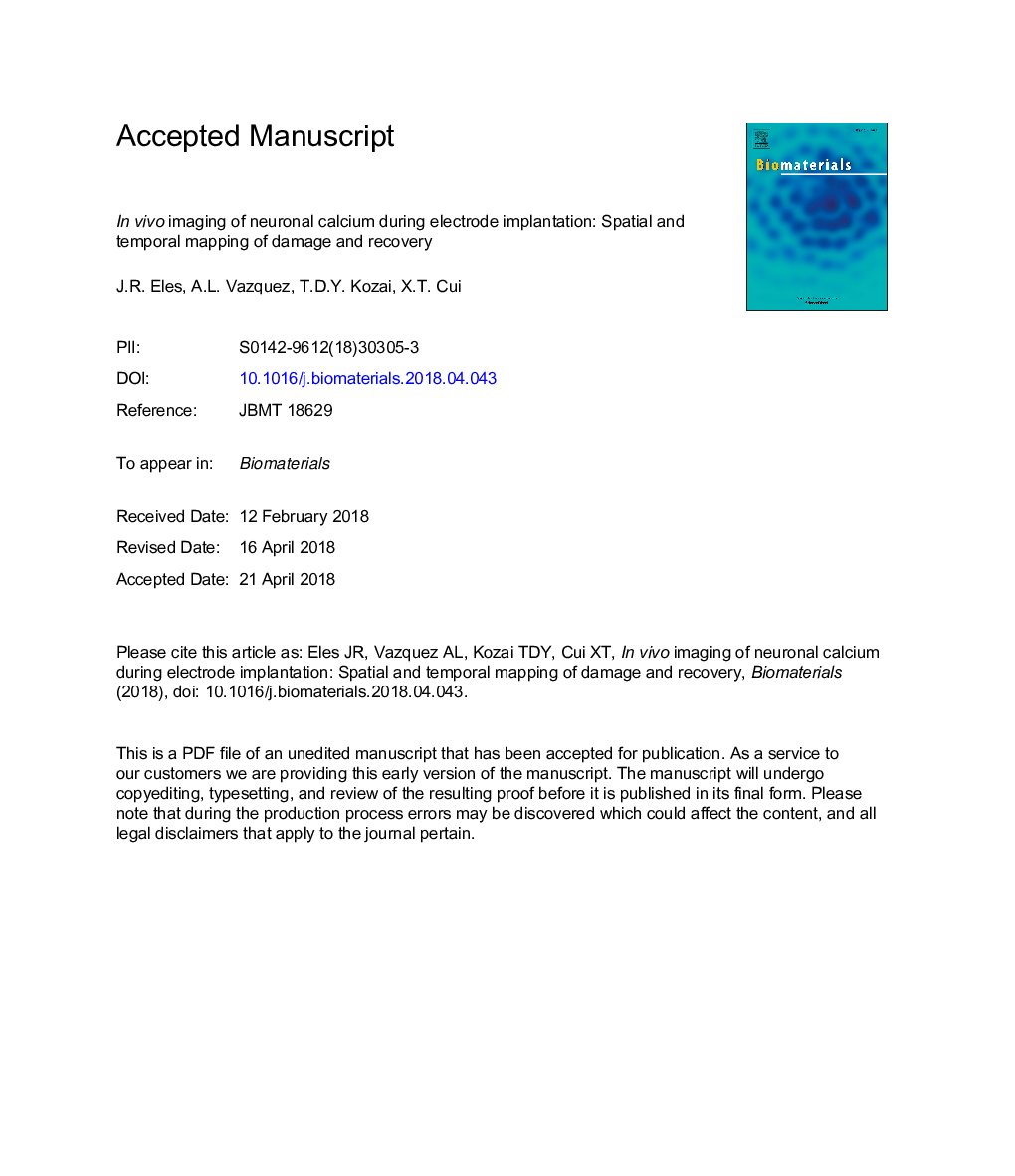| Article ID | Journal | Published Year | Pages | File Type |
|---|---|---|---|---|
| 6484459 | Biomaterials | 2018 | 29 Pages |
Abstract
Implantable electrode devices enable long-term electrophysiological recordings for brain-machine interfaces and basic neuroscience research. Implantation of these devices, however, leads to neuronal damage and progressive neural degeneration that can lead to device failure. The present study uses in vivo two-photon microscopy to study the calcium activity and morphology of neurons before, during, and one month after electrode implantation to determine how implantation trauma injures neurons. We show that implantation leads to prolonged, elevated calcium levels in neurons within 150â¯Î¼m of the electrode interface. These neurons show signs of mechanical distortion and mechanoporation after implantation, suggesting that calcium influx is related to mechanical trauma. Further, calcium-laden neurites develop signs of axonal injury at 1-3â¯h post-insert. Over the first month after implantation, physiological neuronal calcium activity increases, suggesting that neurons may be recovering. By defining the mechanisms of neuron damage after electrode implantation, our results suggest new directions for therapies to improve electrode longevity.
Related Topics
Physical Sciences and Engineering
Chemical Engineering
Bioengineering
Authors
James R. Eles, Alberto L. Vazquez, Takashi D.Y. Kozai, X. Tracy Cui,
